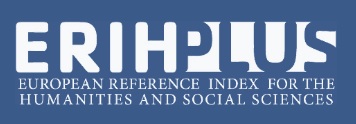Unveiling Sustainable Tourism Behaviour and Future Marketing Direction for Wellness Tourism in Kangra Valley Of Himachal Pradesh, India
Abstract
This study explores the sustainable tourism behaviour of wellness tourists in the Kangra Valley, Himachal Pradesh, examining how demographic factors influence these practices. By focusing on wellness activities such as yoga, meditation, and spa treatments, the research aims to uncover patterns in eco-friendly and socially responsible behaviour among tourists visiting this region. Data analysis was conducted using descriptive statistics and Pearson's correlation to explore the relationships between demographic factors and sustainable tourism behaviour. The findings reveal significant relationships between certain demographic factors and sustainable tourism behaviours. Younger tourists (aged 20-30) are more inclined to engage in environmentally and socially responsible practices. Education level and income also show correlations, albeit weak, with sustainable behaviour such as supporting the local economy and respecting cultural values. The analysis highlights that wellness tourists exhibit diverse sustainable practices, which are influenced by their demographic profiles.
Keywords
References
Abou Arrage, J., & Hady, S. A. (2019). Ecotourism and sustainability: Practices of the Lebanese nature-based operators. Менаџмент у Хотелијерству и Туризму, 7(1), 11–23.
Akadiri, S. S., Akadiri, A. C., & Alola, U. V. (2019). Is there growth impact of tourism? Evidence from selected small island states. Current Issues in Tourism, 22(12), 1480–1498.
Alegre, J., & Pou, L. (2006). The length of stay in the demand for tourism. Tourism Management, 27(6), 1343–1355.
Ballantyne, R., Hughes, K., Lee, J., Packer, J., & Sneddon, J. (2018). Visitors’ values and environmental learning outcomes at wildlife attractions: Implications for interpretive practice. Tourism Management, 64, 190–201.
Ballantyne, R., Packer, J., & Falk, J. (2011). Visitors’ learning for environmental sustainability: Testing short-and long-term impacts of wildlife tourism experiences using structural equation modelling. Tourism Management, 32(6), 1243–1252.
Bhalla, P., & Bhattacharya, P. (2021). Visitors’ satisfaction from ecotourism in the protected area of the Indian Himalayan Region using importance–performance analysis. In Consumer Behaviour in Hospitality and Tourism (pp. 10–27). Routledge.
Budeanu, A. (2007). Sustainable tourist behaviour–a discussion of opportunities for change. International Journal of Consumer Studies, 31(5), 499–508.
Bushell, R., & Sheldon, P. J. (2009). Wellness and tourism: Mind, body, spirit, place. Cognizant Communication.
Canavan, B. (2016). Tourism culture: Nexus, characteristics, context and sustainability. Tourism Management, 53, 229–243.
Chakraborty, A. (2021). Can tourism contribute to environmentally sustainable development? Arguments from an ecological limits perspective. Environment, Development and Sustainability, 23(6), 8130–8146.
Chandran, A., Mandal, S., Shanmugeshwari, M., Nair, G., Das, P., Ramachandran, N., & John, E. (2021). Sustainable tourist behaviour: Developing a second order scale based on three destinations. International Journal of Tourism Research, 23(6), 984–1005. https://doi.org/10.1002/jtr.2458
Chen, C.-C., & Petrick, J. F. (2013). Health and wellness benefits of travel experiences: A literature review. Journal of Travel Research, 52(6), 709–719.
Chen, H., & Rahman, I. (2018). Cultural tourism: An analysis of engagement, cultural contact, memorable tourism experience and destination loyalty. Tourism Management Perspectives, 26, 153–163.
Cole, S., & Morgan, N. (2010). Introduction: Tourism and inequalities.
Collins, D., & Tisdell, C. (2002). Gender and differences in travel life cycles. Journal of Travel Research, 41(2), 133–143.
Dolnicar, S., & Leisch, F. (2008). Selective marketing for environmentally sustainable tourism. Tourism Management, 29(4), 672–680.
Downward, P., & Rasciute, S. (2010). The relative demands for sports and leisure in England. European Sport Management Quarterly, 10(2), 189–214.
Dunn, H. L. (1959). High-Level Wellness for Man and Society. American Journal of Public Health and the Nations Health, 49(6), 786–792. https://doi.org/10.2105/AJPH.49.6.786
ETE, 2009. Sustainable Tourism Development in UNESCO Designated Sites in SouthEastern Europe. Ecological Tourism in Europe (ETE), Bonn, Germany, p. 43
Ferber, R. (1977). Research by convenience. Journal of Consumer Research, 4(1), 57–58.
Fleischer, A., & Pizam, A. (2002). Tourism constraints among Israeli seniors. Annals of Tourism Research, 29(1), 106–123.
Font, X., & McCabe, S. (2018). Marketing for sustainable tourism. Routledge.
Gatersleben, B., Steg, L., & Vlek, C. (2002). Measurement and determinants of environmentally significant consumer behavior. Environment and Behavior, 34(3), 335–362.
Global Wellness Institute. (2018). Global Wellness Tourism Economy. https://globalwellnessinstitute.org/wp-content/uploads/2018/11/GWI_GlobalWellnessTourismEconomyReport.pdf
Goodwin, H., & Francis, J. (2003). Ethical and responsible tourism: Consumer trends in the UK. Journal of Vacation Marketing, 9(3), 271–284. https://doi.org/10.1177/135676670300900306
Hair, J., Andreson, R., Tatham, R., & Black, W. (1998). Multivariate data analysis. 5th (ed) Prentice-Hall Inc. Unites States of America.
Hauke, J., & Kossowski, T. (2011). Comparison of values of Pearson’s and Spearman’s correlation coefficients on the same sets of data. Quaestiones Geographicae, 30(2), 87–93.
Hwang, S.-N., Lee, C., & Chen, H.-J. (2005). The relationship among tourists’ involvement, place attachment and interpretation satisfaction in Taiwan’s national parks. Tourism Management, 26(2), 143–156.
Islam, T. U., & Rizwan, M. (2020). Comparison of correlation measures for nominal data. Communications in Statistics-Simulation and Computation, 51(3), 698–714.
John, J. A. (n.d.). THE HIMACHAL PRADESH TOURISM POLICY, 2019.
Juvan, E., & Dolnicar, S. (2017). Drivers of pro-environmental tourist behaviours are not universal. Journal of Cleaner Production, 166, 879–890.
Karst, H. (2022). “This is a holy place of Ama Jomo”: Buen vivir, indigenous voices and ecotourism development in a protected area of Bhutan. In Peace Through Tourism (pp. 378–394). Routledge.
Kattiyapornpong, U., & Miller, K. E. (2008). A practitioner’s report on the interactive effects of socio-demographic barriers to travel. Journal of Vacation Marketing, 14(4), 357–371.
Klarin, T. (2018). The Concept of Sustainable Development: From its Beginning to the Contemporary Issues. Zagreb International Review of Economics and Business, 21(1), 67–94. https://doi.org/10.2478/zireb-2018-0005
Konu, H. (2010). Identifying potential wellbeing tourism segments in Finland. Tourism Review, 65(2), 41–51.
Konu, H., & Laukkanen, T. (2009). Roles of motivation factors in predicting tourists’ intentions to make wellbeing holidays–a Finnish case. ANZMAC 2009 conference proceedings.
Lee, T. H., & Jan, F.-H. (2019). The low-carbon tourism experience: A multidimensional scale development. Journal of Hospitality & Tourism Research, 43(6), 890–918.
Lee, T. H., Jan, F.-H., & Yang, C.-C. (2013). Conceptualizing and measuring environmentally responsible behaviors from the perspective of community-based tourists. Tourism Management, 36, 454–468.
Lee, W. H., & Moscardo, G. (2005). Understanding the impact of ecotourism resort experiences on tourists’ environmental attitudes and behavioural intentions. Journal of Sustainable Tourism, 13(6), 546–565.
Lee, Y. G., & Bhargava, V. (2004). Leisure time: Do married and single individuals spend it differently? Family and Consumer Sciences Research Journal, 32(3), 254–274.
Lehto, X. Y., Brown, S., Chen, Y., & Morrison, A. M. (2006). Yoga tourism as a niche within the wellness tourism market. Tourism Recreation Research, 31(1), 25–35.
Lim, C., & McAleer, M. (2005). Ecologically sustainable tourism management. Environmental Modelling & Software, 20(11), 1431–1438. https://doi.org/10.1016/j.envsoft.2004.09.023
Lopes, A. P., & Rodríguez-López, N. (2022). Application of a decision-making tool for ranking wellness tourism destinations. Sustainability, 14(23), 15498.
Lundberg, E. (2015). The Level of Tourism Development and Resident Attitudes: A Comparative Case Study of Coastal Destinations. Scandinavian Journal of Hospitality and Tourism, 15(3), 266–294. https://doi.org/10.1080/15022250.2015.1005335
Ma, A. T., Chow, A. S., Cheung, L. T., Lee, K. M., & Liu, S. (2018). Impacts of tourists’ sociodemographic characteristics on the travel motivation and satisfaction: The case of protected areas in South China. Sustainability, 10(10), 3388.
Madrigal, R., & Kahle, L. R. (1994). Predicting vacation activity preferences on the basis of value-system segmentation. Journal of Travel Research, 32(3), 22–28.
Mazilu, M., & Mitroi, S. (2010). Demographic, social, economic and geographic features-shaping factors of the tourist market. Romanian Economic and Business Review, 5(1), 159.
Meinhold, J. L., & Malkus, A. J. (2005). Adolescent environmental behaviors: Can knowledge, attitudes, and self-efficacy make a difference? Environment and Behavior, 37(4), 511–532.
Mihalic, T. (2016). Sustainable-responsible tourism discourse–Towards ‘responsustable’tourism. Journal of Cleaner Production, 111, 461–470.
Miller, G. A. (2003). Consumerism in sustainable tourism: A survey of UK consumers. Journal of Sustainable Tourism, 11(1), 17–39.
Minton, E. A., Spielmann, N., Kahle, L. R., & Kim, C.-H. (2018). The subjective norms of sustainable consumption: A cross-cultural exploration. Journal of Business Research, 82, 400–408.
Mi̇Shra, D., & Panda, R. (2021). How Delightful is Indian Wellness Tourism? A Netnographic Study. Advances in Hospitality and Tourism Research (AHTR), 9(1), 132–156. https://doi.org/10.30519/ahtr.784232
Mkwizu, K. H. (2018). The influence of television advertising on domestic tourism: A case study of southern tourist attractions in Tanzania.
Mody, M., Day, J., Sydnor, S., Jaffe, W., & Lehto, X. (2014). The different shades of responsibility: Examining domestic and international travelers’ motivations for responsible tourism in India. Tourism Management Perspectives, 12, 113–124.
Moore, D. S., & McCabe, G. P. (1989). Introduction to the practice of statistics. WH Freeman/Times Books/Henry Holt & Co.
Moriarty, P., & Honnery, D. (2005). Determinants of urban travel in Australia. 28.
Mueller, H., & Kaufmann, E. L. (2001). Wellness tourism: Market analysis of a special health tourism segment and implications for the hotel industry. Journal of Vacation Marketing, 7(1), 5–17.
Papatheodorou, A. (2001). Why people travel to different places. Annals of Tourism Research, 28(1), 164–179.
Pearce, P. L. (2011). Travel motivation, benefits and constraints to destinations.
Qiu, Q., Zheng, T., Xiang, Z., & Zhang, M. (2019). Visiting intangible cultural heritage tourism sites: From value cognition to attitude and intention. Sustainability, 12(1), 132.
Quintela, J., Costa, C., & Correia, A. (2017). The role of health and wellness tourism in sustainable territorial development.
Ramkissoon, H. (2023). Perceived social impacts of tourism and quality-of-life: A new conceptual model. Journal of Sustainable Tourism, 31(2), 442–459. https://doi.org/10.1080/09669582.2020.1858091
Ramkissoon, H., & Mavondo, F. T. (2017). Proenvironmental behavior: Critical link between satisfaction and place attachment in Australia and Canada. Tourism Analysis, 22(1), 59–73.
Reisinger, Y., Michael, N., & Hayes, J. P. (2019). Destination competitiveness from a tourist perspective: A case of the United Arab Emirates. International Journal of Tourism Research, 21(2), 259–279. https://doi.org/10.1002/jtr.2259
Richards, G. (1996). The scope and significance of cultural tourism.
Ruhanen, L., Weiler, B., Moyle, B. D., & McLennan, C. J. (2015). Trends and patterns in sustainable tourism research: A 25-year bibliometric analysis. Journal of Sustainable Tourism, 23(4), 517–535.
Saarinen, J. (2006). Traditions of sustainability in tourism studies. Annals of Tourism Research, 33(4), 1121–1140.
San Martín, H., Hernández, B., & Herrero, Á. (2021). Social consciousness and perceived risk as drivers of crowdfunding as a socially responsible investment in tourism. Journal of Travel Research, 60(1), 16–30.
Sedgwick, P. (2012). Pearson’s correlation coefficient. Bmj, 345.
Sharpley, R. (n.d.). Tourism and Sustainable Development: Exploring the Theoretical Divide. Journal of Sustainable Tourism.
Smith, M. K., & Puczkó, L. (2016). The Routledge handbook of health tourism. Taylor & Francis.
Spence, M. (2002). The Effect of Age on the Probability of Participation in Wildlife‐Related Activities: A Birth Year Cohort Study. American Journal of Agricultural Economics, 84(5), 1384–1389.
Su, L., Swanson, S. R., & He, X. (2020). A scale to measure residents perceptions of destination social responsibility. Journal of Sustainable Tourism, 28(6), 873–897.
Trang, H. L. T., Lee, J.-S., & Han, H. (2019). How do green attributes elicit pro-environmental behaviors in guests? The case of green hotels in Vietnam. Journal of Travel & Tourism Marketing, 36(1), 14–28. https://doi.org/10.1080/10548408.2018.1486782
THE HIMACHAL PRADESH TOURISM POLICY, 2019 Department of Tourism & Civil Aviation Government of Himachal Pradesh. (n.d.). https://himachaltourism.gov.in/wp-content/uploads/2019/09/Himachal-Pradesh-Tourism-Policy-2019.pdf
Uçgun, G. Ö., & Narcı, M. T. (2022). The role of demographic factors in tourists’ sustainability consciousness, sustainable tourism awareness and purchasing behavior. Journal of Tourismology, 8(2), 215–237.
Voigt, C., Brown, G., & Howat, G. (2011a). Wellness tourists: In search of transformation. Tourism Review, 66(1/2), 16–30. https://doi.org/10.1108/16605371111127206
Voigt, C., Brown, G., & Howat, G. (2011b). Wellness tourists: In search of transformation. Tourism Review, 66(1/2), 16–30. https://doi.org/10.1108/16605371111127206
Voigt, C., Brown, G., & Howat, G. (2011c). Wellness tourists: In search of transformation. Tourism Review, 66(1/2), 16–30.
Wray, M., & Weiler, B. (2013). Wellness tourism: The factors and processes that drive sustainable regional destinations. Wellness Tourism, 78–98.
Xie, H., Costa, C. A., & Morais, D. B. (2008). Gender differences in rural tourists’ motivation and activity participation. Journal of Hospitality & Leisure Marketing, 16(4), 368–384.

This work is licensed under a Creative Commons Attribution 3.0 License.















